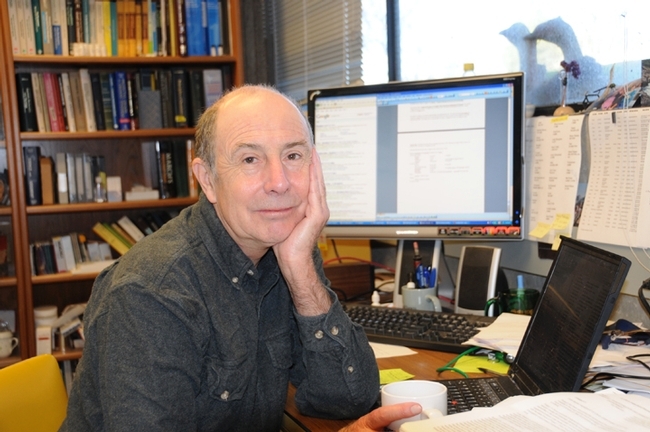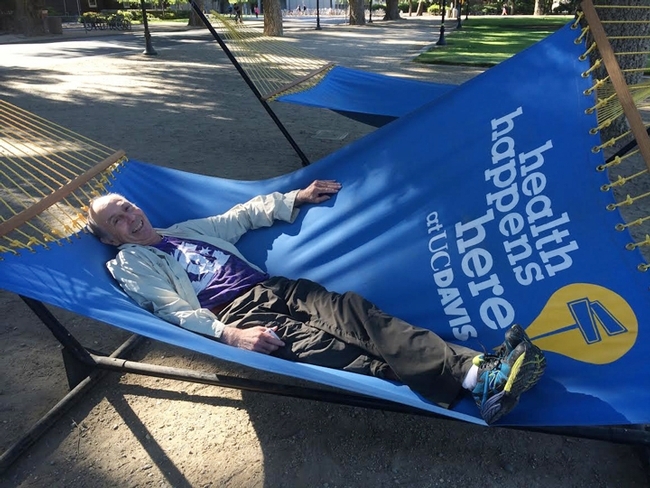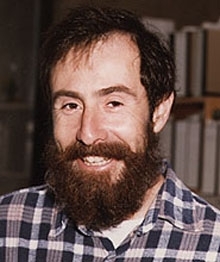
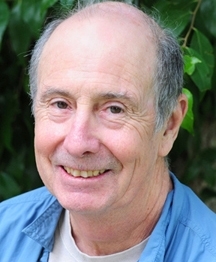
So begins Marlin Rice, author and a past president of the Entomological Society of America (ESA), in his wonderful and comprehensive piece in the current edition of ESA's American Entomologist about the legendary Bruce Hammock.
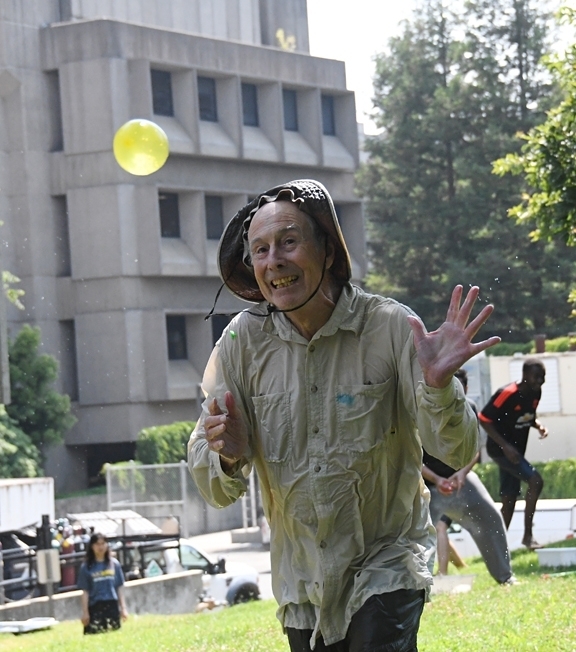
His story begins in Arkansas.
A native of Little Rock, Ark., Bruce received his bachelor's degree in entomology (with minors in zoology and chemistry) magna cum laude from Louisiana State University, Baton Rouge, in 1969. He received his doctorate in entomology-toxicology from UC Berkeley in 1973 with John Casida at UC Berkeley. Hammock served as a public health medical officer with the U.S. Army Academy of Health Science, San Antonio, and as a postdoctoral fellow at the Rockefeller Foundation, Department of Biology, Northwestern University, Evanston, Ill.
The headline says it well: "Bruce D. Hammock: Science Should Be Fun."
Hammock describes his Tom Sawyer-like childhood in Little Rock, where he wandered the woods and collected animals.
Rice asked him: "What was your favorite thing to collect?"
"I just liked interested creatures," Hammock told him. "I had a pet 'coon, pet deer, pet 'possums named Sears and Roebuck. The two 'possums had stolen some hot dogs at a Boy Scout jamboree and were trying to make their escape. This guy was going to kill them, so I took them home."
"I found Willy—his mom had been killed by hunters—in a tree stump and bottle-raised him with an old toothless bulldog, and he would ride around on her back. Raccoons and dogs are natural enemies. If an [unfamiliar] dog would growl at him, Willy would try to kill it, so he was not popular."
Young Tom went on to become an Eagle Scout and graduate from Louisiana State University. "I liked football, but I was not good at it," he recalled. "But I was upset with the football craziness in Arkansas, so I thought I could go to LSU and get away from it, but I ended up living underneath the football stadium."
In the Army, he served as a medical officer at Fort Sam, Houston, and what he saw--severely burned people in terrible pain--made a lasting impression on him. Today he's deeply involved in his research at UC Davis and the company he founded, EicOsis, in 2011 to alleviate pain in humans and companion animals.
Of EicOsis, he told Rice: "It's actually three companies: human health, equine health, and companion animal health. The human health goal is moving the drug into the clinic to treat human neuropathic pain. In dogs and cats and horses, it turns out that non-steroidals, like aspirin, are so much more toxic. If you give your dog some non-steroidals, you're saying you want your dog to be pain-free for a year, but you know you're killing it. Some non-steroidals are so toxic to non-primates that there's a real opportunity to get epoxide hydrolase to the clinic."
Excerpts from the article:
- Little did we know: While in Warsaw to attend a scientific meeting, Professor Hammock was arrested in Poland on suspicion of being a spy and spent six hours in jail.
- What does he look for in researchers hoping to join his lab? "Curiosity. And then there's this: If science is not fun, then it shouldn't be done. And if they enjoy science then they probably will be successful."
- Why did he leave UC Riverside for UC Davis? "Smog. [But] I absolutely loved Riverside. At the time, it was the largest entomology department in the world. It was just wonderful. And it was in the desert and I loved the desert. And I like rattlesnakes, and there is no shortage of rattlesnakes. They're not very pettable, but they're interesting. I've been bitten a lot of times by non-poisonous snakes. I thought I was fast, but snakes were faster. So I never kept a rattlesnake more than a few hours."
- His parents? His father was a postal worker and his mother sold World Book encyclopedias "and was convinced that if you bought World Book, you would be brilliant."
Indeed, Bruce Hammock's career is incredible--incredibly focused, superlative and kind. But he also has a finely honed sense of humor. Who else would launch an annual water balloon battle? He started it in 1980 on the Briggs Hall lawn, just outside his office. It's now called the Bruce Hammock Lab Water Balloon Battle or "Bruce's Big Balloon Battle at Briggs."
"A few years ago, we had the management officer in biochemistry upset because she thought it was unseemly for the university," Hammock told Rice. "Last year, somebody called the police on us, and the police came, and the guy took off his gun belt and joined us. [Laughs.] That was fun!"
So is science. Or it ought to be.
Some Related Links:
- Bruce Hammock and EicOsis, Innovator of the Year
- Bruce Hammock Receives $6 Million Grant
- Bruce Hammock Water Balloon Battle: 15 Minutes of Aim
- Research Could Lead to Drug to Prevent or Reduce Autism, Schizophrenia
- Hammock Lab Union Draws 100 Scientists from 10 Countries
- Bruce Hammock: Scientist Extraordinaire
Attached Images:
